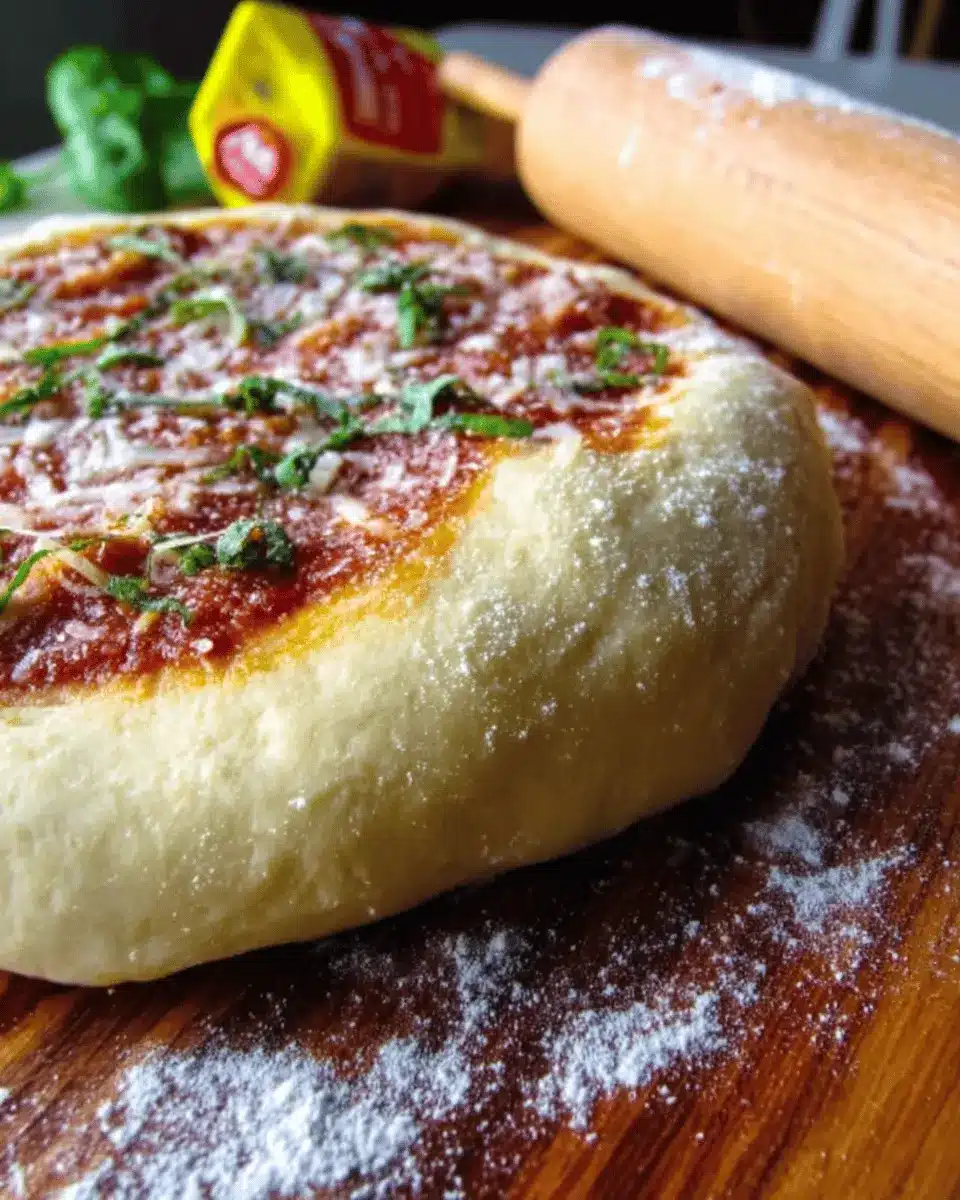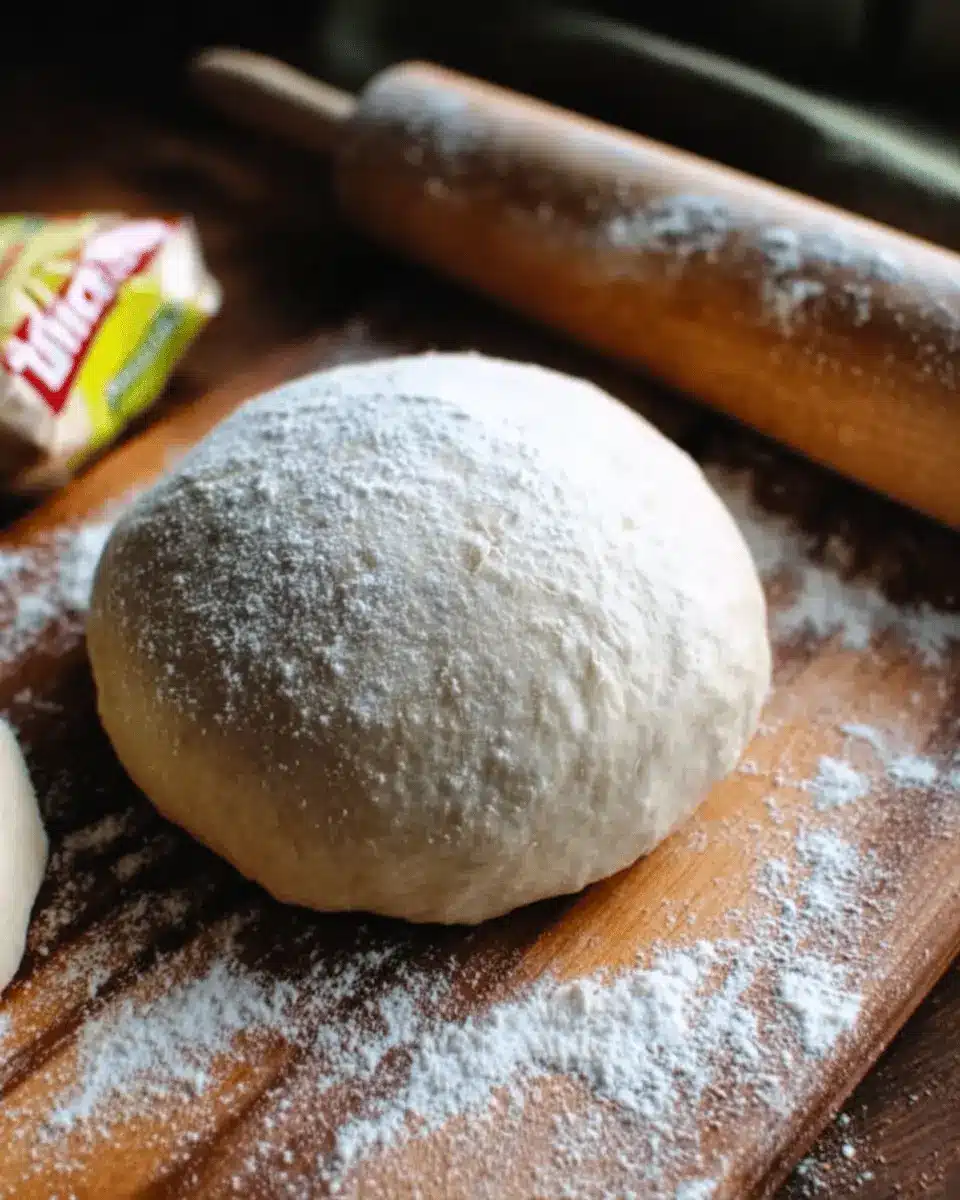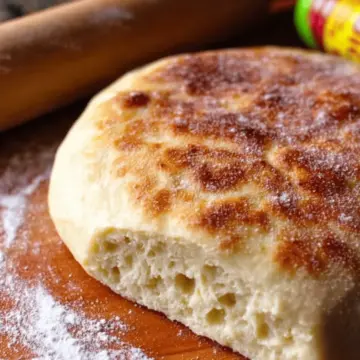Introduction to Italian Pizza Dough Recipe
When it comes to pizza, nothing can quite compare to the delightful experience of making your own Italian pizza dough. This flavorful, aromatic base is what sets homemade pizza apart from the standard delivery option. Have you ever wondered why homemade pizza dough rocks? Let’s dive into the magic of crafting your own dough.
First off, it’s all about customization. You control the ingredients, ensuring they’re fresh and wholesome, without the fillers found in many store-bought versions. Plus, you can adjust the flour type—or even experiment with gluten-free options—making it a win for anyone with dietary restrictions.
Did you know that according to the Pizza Marketing Study, around 80% of pizza enthusiasts prefer thin crust? With your homemade dough, you can create that perfect, crispy texture just how you like it.
And let’s not forget about the joy of cooking! There's something incredibly rewarding about kneading the dough by hand and watching it rise, transforming simple ingredients into something delicious.
Now, if you’re ready to roll up your sleeves and treat yourself (and maybe a friend), get started with our detailed Italian Pizza Dough Recipe. Let’s make some dough!

Ingredients for Italian Pizza Dough
When it comes to crafting the perfect Italian pizza dough recipe, using the right ingredients is crucial for achieving that delightful chewiness and flavor you crave. Here’s what you’ll need to create your masterpiece:
- Filtered Water (1 ⅓ cup): Always use filtered water to eliminate any chlorine that can inhibit yeast activity.
- Dry Active Yeast (1 pkt): This little powerhouse brings your dough to life. Make sure it's fresh for the best results.
- Sugar (1 tbsp): A touch of sugar helps to feed the yeast, giving your dough that nice rise and a hint of sweetness.
- Olive Oil (2.5 tbsp): This adds richness and flavor, enhancing the overall texture of your crust.
- Kosher Salt (1 tbsp): Essential for flavor, salt also controls yeast activity, ensuring a balanced rise.
- High-Protein Bread Flour (3 cups): Using high-protein flour creates a strong gluten structure, crucial for that perfect pizza base.
With these ingredients at hand, you're on your way to making pizza that rivals your favorite pizzeria! Curious about the science behind yeast? Check out this resource on fermentation for more insights.
Step-by-Step Preparation of Italian Pizza Dough
Making an authentic Italian pizza dough from scratch is a rewarding experience, especially when you smell that delightful aroma wafting through your home. Follow this step-by-step guide to ensure you get it just right!
Blooming the yeast
The first step in our Italian pizza dough recipe is to activate the yeast. This process is known as "blooming." Here's how to do it:
- Combine 1 packet of dry active yeast and 1 tablespoon of sugar in 1 ⅓ cups of warm filtered water (ideally around 100°F).
- Let it sit for about 5-10 minutes until a thick foam forms on the surface. This foam indicates that the yeast is alive and ready to work its magic. If you don’t see bubbles, your yeast might be expired—time for a fresh packet!
Mixing the first ingredients
Once your yeast has bloomed, it’s time to bring in the first wave of ingredients for your dough.
- Pour the foamy yeast mixture into a mixing bowl.
- Add 1 cup of high-protein bread flour and combine the mixture until it's fairly smooth. This initial mixing helps create a strong gluten structure, essential for that ideal chewy crust.
Incorporating salt and oil
After the first cup of flour is combined, it’s time to add two crucial ingredients: salt and olive oil.
- Mix in 1 tablespoon of kosher salt and 2.5 tablespoons of olive oil.
- Stir until fully incorporated. Salt not only enhances flavor but also strengthens the dough, while olive oil brings a lovely richness that elevates the final product.
Adding the remaining flour
Now, let’s make your dough come together.
- Gradually add the remaining flour, about 2 cups, mixing as you go.
- Aim for a soft, slightly tacky dough. Remember, the exact flour amount can vary depending on humidity and flour type, so focus on the feel of the dough. Use your hands if necessary; it’s part of the fun! For an excellent guide on dough consistency, check out this resource on dough textures.
Proofing the dough
The final step in crafting your Italian pizza dough is letting it rise.
- Place the dough in a lightly oiled bowl and cover it with a damp cloth or plastic wrap.
- Let it proof in a warm area until it’s doubled in size—usually around 45 minutes to an hour. This fermentation period develops flavor and texture, creating that irresistible bite we all know and love.
And there you have it! With these steps, you’ll create a foundation for an incredible homemade pizza, perfect for any occasion. Don't forget, the journey from dough to deliciousness is a labor of love, so relish each moment!

Variations on Italian Pizza Dough
Whole Wheat Pizza Dough
For a healthier twist on your Italian pizza dough recipe, consider using whole wheat flour. This variation adds a nutty flavor and increases the fiber content of your pizza. Simply substitute half of the bread flour with whole wheat flour while following the original recipe. Keep in mind that whole wheat dough might need a little more water, so adjust as necessary to achieve that ideal, slightly tacky consistency.
Herb-Infused Dough Options
Elevate your pizza night by infusing herbs into your dough. Adding dried oregano, basil, or even minced fresh garlic can transform your crust into a delightful flavor experience. Simply mix in a tablespoon of your preferred herb during step 4 of the Italian pizza dough recipe. It’s a delicious way to impress your friends and family without much extra work!
For more about the benefits of using whole grains in baking, check out the Whole Grains Council. If you're curious about how herbs can enhance flavor, consider reading up on culinary uses at the American Culinary Federation.
Cooking Tips and Notes for Italian Pizza Dough
Making your own Italian pizza dough is a game changer for pizza lovers! Here are some handy tips to elevate your dough-making experience:
-
Water Temperature: When blooming your yeast, aim for warm water (around 100°F to 110°F). Too hot can kill the yeast, while too cold might not activate it properly.
-
Flour Variety: Opt for high-protein bread flour for the best results. It gives your crust the chewiness we all love in traditional pizza.
-
Kneading and Texture: Focus on the dough’s feel. It should be soft and slightly tacky, not sticky. If it sticks to your hands excessively, add a touch more flour.
-
Proofing: Let your dough rise in a warm, draft-free area. Cover it with a damp cloth to keep it moist. As an alternative, you can place it in a turned-off oven with the light on for warmth.
With these tips, your Italian pizza dough is bound to impress! Need more inspiration? Check out King Arthur Baking for expert advice on baking.

Serving Suggestions for Italian Pizza Dough
When you've mastered this Italian Pizza Dough Recipe, the real fun begins: serving it up just right! Here are some delightful ways to enjoy your freshly baked pizza.
Classic Margherita
Simply top your dough with fresh mozzarella, san marzano tomatoes, and basil. It's a straightforward yet flavorful choice that lets your dough shine.
Gourmet Toppings
Try combinations like chicken ham, turkey bacon, and artichokes for a twist. You can also add arugula post-bake for a fresh touch.
Veggie Delight
For a vegetarian feast, load your pizza with roasted bell peppers, zucchini, and mushrooms. The fiber and crunch of veggies not only enhance flavors but also add nutrients.
Alternative Sauces
Don't feel limited to tomato sauce! Consider pesto or even a tangy white sauce as your base for a unique flavor profile.
With the flexibility of this dough, the possibilities are endless! Dig into the fun of creating your own signature pizza—who says you have to stick to tradition?
For more topping ideas and techniques, check out resources from Serious Eats and Bon Appétit to elevate your pizza-making game!
Time Breakdown for Italian Pizza Dough
Preparation Time
Preparing your Italian pizza dough recipe is quick and straightforward. You'll need about 15 minutes to gather your ingredients, mix them, and get the dough ready for proofing.
Proofing Time
Proofing is where the magic happens! Allow the dough to rest and rise, which takes about 45 minutes to an hour. This step is crucial for developing that delightful texture we all love.
Total Time
When you add it all up, you’re looking at a total time of approximately 1 hour and 15 minutes. This includes preparation and proofing, giving you plenty of time to plan your toppings while your dough is working its way to perfection.
Nutritional Facts for Italian Pizza Dough
Calories
One serving of this Italian pizza dough recipe, typically a single 8-inch pizza base, contains around 270 calories. This provides a satisfying and enjoyable base for all your favorite toppings without overwhelming your daily caloric intake.
Protein
This delightful dough packs about 9 grams of protein per serving. The high-protein bread flour contributes significantly to this, making it a great option for those looking to boost their protein intake while enjoying a rich, flavorful pizza experience.
Sodium
With approximately 480 mg of sodium per serving, this Italian pizza dough recipe offers a balanced flavor without being overly salty. It’s essential to note that you can always adjust the kosher salt to suit your personal taste and dietary needs.
Whether you're whipping up a casual dinner or planning a pizza night with friends, understanding these nutritional facts can help you make informed choices while still delighting in the joy of homemade pizza. For further insights into balancing your meals, check out resources like the U.S. Department of Agriculture for more information on nutritional guidelines.
FAQs about Italian Pizza Dough Recipe
Can I use all-purpose flour instead of bread flour?
Absolutely! While bread flour is ideal for a chewy texture thanks to its higher protein content, using all-purpose flour will still yield a decent pizza crust. It may be slightly less chewy and more tender, but it will still be delicious. To achieve a better texture, consider adding a little vital wheat gluten to your all-purpose flour.
How long can I store the pizza dough?
If you’re planning to use your Italian pizza dough recipe later, you can store it in the refrigerator for up to 3 days. Just make sure to wrap it tightly in plastic wrap or store it in an airtight container to prevent it from drying out.
Can I freeze the dough, and if so, how?
Yes! Freezing your pizza dough is a great option. After the initial proofing, shape the dough into a ball and wrap it tightly in plastic wrap. Then place it in an airtight freezer bag. It can be stored for up to 3 months. When you're ready to use it, simply thaw it in the refrigerator overnight and let it come to room temperature before stretching it out.
Conclusion on Italian Pizza Dough Recipe
In conclusion, mastering this Italian Pizza Dough Recipe is a rewarding endeavor that will elevate your homemade pizza nights. The combination of quality ingredients and proper techniques leads to a dough that’s both flavorful and perfectly chewy. So roll up your sleeves, have fun, and enjoy your culinary creation!
For more great tips on pizza making and baking techniques, check out Serious Eats and America's Test Kitchen for insights that will further enhance your skills in the kitchen. Happy baking!

Italian Pizza Dough Recipe - Easy Steps for Perfect Homemade Pizzas
Equipment
- Mixing Bowl
- Measuring Cups
- Measuring spoons
- Whisk
- Plastic Wrap
Ingredients
Dough Ingredients
- 1.33 cup filtered water
- 1 pkt dry active yeast
- 1 tablespoon sugar
- 2.5 tablespoon olive oil
- 1 tablespoon kosher salt
- 3 cup bread flour high protein
Instructions
Dough Preparation
- Bloom yeast in warm water with dissolved sugar.
- Allow yeast to bloom until a thick foam has developed on top of water.
- Add liquid to mixing bowl and add 1 cup of flour and combine well.
- Once the first cup of flour is incorporated, add the salt and oil. Combine.
- Now add the remaining flour until that soft, slightly tacky dough is achieved. Focus on the feel.
- Proof until dough has doubled in size. Approximately 45 minutes to an hour.





Leave a Reply